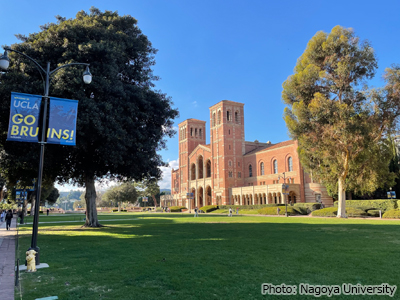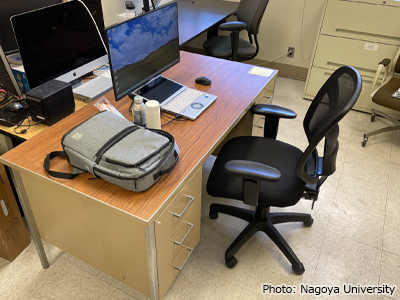Research exchange and collaboration on Arctic dust at UCLA
Overseas Fellowship Program Participant:FY2023 First Call Short-Term Program
Kei Kawai (Nagoya University)
Mineral dust is emitted from arid regions of the world and affects the Earth’s climate and environment by scattering and absorbing sunlight, acting as cloud condensation nuclei and ice nucleating particles (INPs), and providing nutrients to marine ecosystems. In recent years, dust is emitted from snow-free land surface in the Arctic region due to global warming (hereafter referred to as “Arctic dust”). Recent experimental studies have shown that such Arctic dust has a remarkably high ability to act as INPs. By implementing the experimental result into a global climate model and performing numerical simulations for the current climate, I revealed that Arctic dust plays a dominant role as INPs in low-level clouds (at an altitude of about 0-3 km) in the Arctic during summer and fall. The Arctic is warming at a rate about 2-4 times faster than the global average, so further research on the long-term variability of the emission and climate impacts of Arctic dust is needed.


Therefore, under the ArCS II Overseas Fellowship Program, I visited the University of California, Los Angeles (UCLA; Fig. 1) in USA for about four weeks to conduct research exchange and collaboration with Prof. Jasper Kok, who is working on cutting-edge research on dust emission and climate impacts. During the first week, I had two meetings with Prof. Kok and discussed the setup and period of simulations to be conducted as part of the joint research on the long-term variability of the emission and climate impacts of Arctic dust. In his group meeting, I learned about research topics that his group is currently working on from a presentation by one of his PhD students. In the laboratory, I was provided with my own desk and PC monitor to create a comfortable research environment (Fig. 2). During the second to fourth weeks, I implemented the dust emission data provided by Prof. Kok into a global climate model CAM-ATRAS and ran simulations in various settings. Every week, I had a meeting with him to discuss the results and problems of the simulations. In the group meetings, I presented and discussed my recent three papers.
This was my first time to stay abroad for about a month, so it was a valuable experience not only for my research but also for my life. I would like to express my gratitude to the ArCS II Overseas Fellowship Program and everyone who supported my visit.
